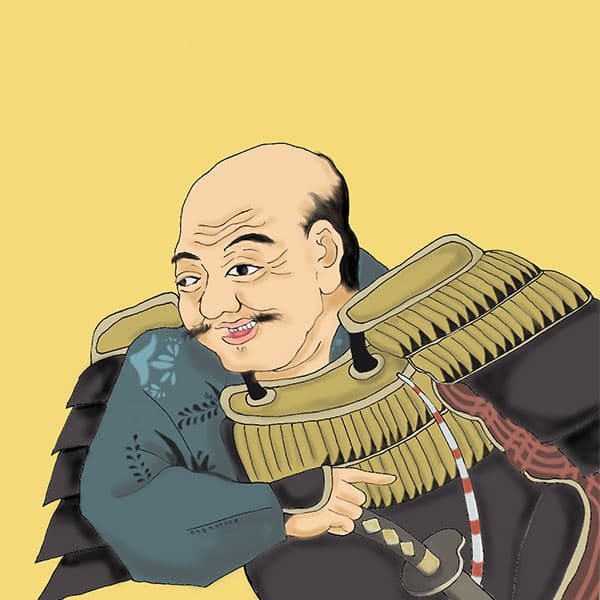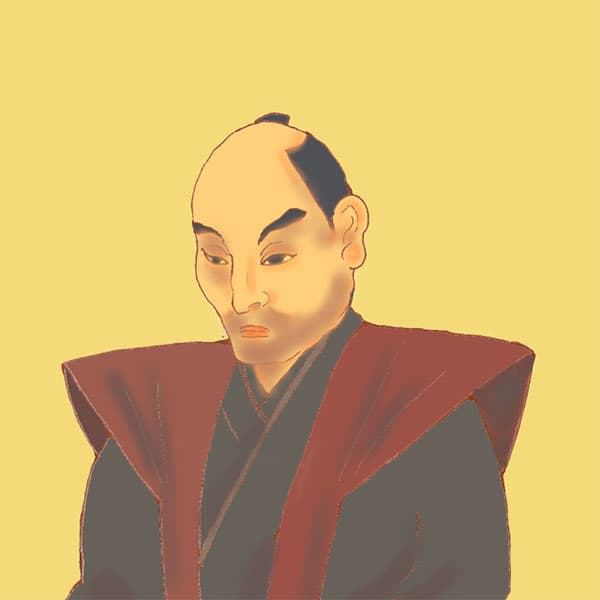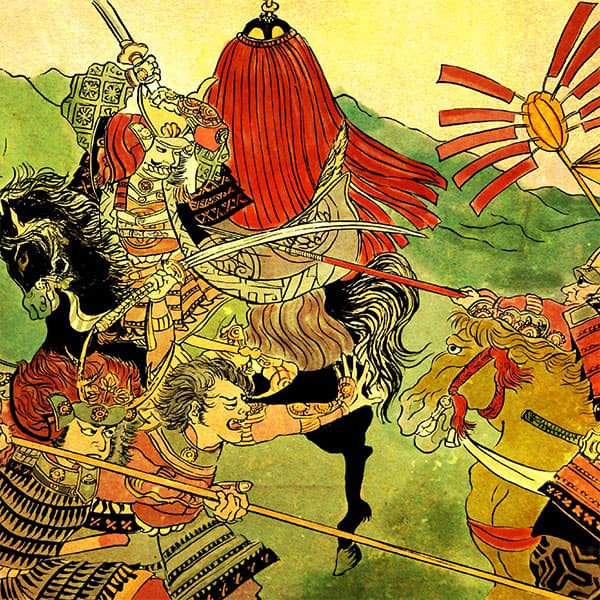Tadanori Okubo (1/2)A loyal vassal who supported the Tokugawa family and was replaced by Ieyasu.

Tadanori Okubo
- Article category
- biography
- name
- Tadanori Okubo (1553-1628)
- place of birth
- Kanagawa Prefecture
- Related castles

Odawara Castle
- related incident
During the Sengoku period, Odawara was ruled by the Hojo clan (also called the Gohojo clan to distinguish it from the Hojo clan, which was the regent of the Kamakura period). However, the Hojo clan was destroyed by Toyotomi Hideyoshi. After that, Mr. Okubo was put in charge of Odawara.
The Okubo clan ruled from the early Edo period until the Meiji period, but in 1614, Okubo Tadayoshi was replaced and temporarily separated from Odawara.
Odawara is a strategic point along the Tokaido route, and is the western entrance from Edo.
Mr. Okubo was entrusted with such an important place, but he was temporarily deprived of control.
So, what kind of person was Tadayuki Okubo, who was rewritten? Let's introduce it.
Mr. Matsudaira and Mr. Okubo
The Okubo clan is a family that has long served the Mikawa Matsudaira clan (the family that produced Tokugawa Ieyasu, who later founded the Tokugawa shogunate).
The Okubo clan was one of the representative families that served the Matsudaira clan for a long time, known as the seven Anshofudai families (Sakai, Okubo, Honda, Abe, Ishikawa, Aoyama, and Uemura). .
Originally, the Okubo clan was said to be a branch of the Utsunomiya clan, a feudal lord from the Sengoku period in northern Kanto.
He later moved to Mikawa (present-day eastern Aichi Prefecture) and changed his surname from Utsunomiya to Utsu.
The era of Utsu Tadatoshi has passed.
There was a martial artist named Togoro Okubo who came from Echizen. Togoro, who excelled in martial arts, took a liking to Tadatoshi and said, ``Tadatoshi is the only one who should keep his last name.''
When Tadatoshi consulted his lord, Kiyoyasu Matsudaira (Tokugawa Ieyasu's grandfather), he was told, ``Okubo is a great warrior, so please listen to him in order to emulate him,'' and he changed his surname from the Utsu clan to the Okubo clan.
At this time, all of Tadatoshi's brothers changed their surnames to Okubo, and later to Okubo.
Among the brothers who changed their surname to Mr. Okubo is Yoshikazu Okubo.
Nounin served three generations: Kiyoyasu Matsudaira, Hirotada (father of Tokugawa Ieyasu), and Ieyasu. He was a military commander who distinguished himself in the attack on Kanie Castle in 1555, and was considered one of the ``Seven Spears of Kanie.''
This nobleman had many children; his eldest son was Tadayo Okubo (Kanie Seven Spears, one of the 16 Tokugawa Generals, and later the founder of the Odawara domain), and his second son was Okubo Tadasa (Kanie Seven Spears, Tokugawa Ten Generals). He was counted as one of the six divine generals and later became the lord of the Numazu domain in Suruga), and his eighth son was Tadanori Okubo (who entered the Edo shogunate and became a hatamoto; author of ``Mikawa Monogatari''; famous as Okubo Hikozaemon in storytelling).
The Okubo clan raised their clan to serve the Matsudaira family and contributed to Tokugawa Ieyasu's takeover of the country.
When the Tokugawa clan entered the Edo period, they became vassals of daimyo, hatamoto, fudai daimyo, and feudal lords. The Okubo clan had such a deep connection with the Tokugawa clan.
Tadayoshi Okubo, father of Tadayoshi Okubo
Tadayo Okubo was the eldest son of Yoshikazu Okubo, who served the Matsudaira clan (later the Tokugawa clan) from the time of Kiyoyasu Matsudaira.
Tadayo was born in 1532 in Kamiwada, Nukata District, Mikawa Province (present-day Okazaki City, Aichi Prefecture).
He served the Tokugawa clan and participated in the capture of Kanie Castle, the Mikawa Ikko Uprising, and the Battle of Mikatagahara.
In ``Mikawa Monogatari'' written by his younger brother Tadanori Okubo, it is said that immediately after defeat at the Battle of Mikatagahara, Amano Yasukage and Takeda's camp was attacked at night with guns and confused, prompting Takeda Shingen to say, ``Well, now, we have won.'' He is praised as ``a formidable enemy.''
In addition, in the Battle of Nagashino, where he fought alongside the Oda clan, he played an active role alongside his younger brother Tadasa, Shoichi Naruse, and Sadayoshi Kusakabe, and was praised by Oda Nobunaga as ``A samurai who never leaves behind the enemy, like a good ointment (such as today's ship medicine).'' He was highly praised, and Ieyasu gave him a conch shell as a token of his reward.
After defeating the Takeda family in the Battle of Nagashino, Tadayo was given control of Futamata Castle.
After the Honnoji Incident, when the Tokugawa family expanded its influence to Kai (present-day Yamanashi Prefecture) and Shinano (present-day Nagano Prefecture), Tadayo Okubo took charge of the management of the newly acquired territory as Shinano Sobugyo.
Around this time, Honda Masanobu, who was wandering around the country, wanted to return to Japan, so he interceded with Tokugawa Ieyasu and helped him return to the Tokugawa clan. Masanobu later served as Ieyasu's advisor. He is a person whom Ieyasu called ``a friend.''
Tadayo was more than 10 years older than Ieyasu and was of the same generation as Tadatsugu Sakai, who supported the early Tokugawa clan, and Kazumasa Ishikawa, who ran away. For this reason, as the oldest member of the Tokugawa family's vassals, he may have had the role of supervising the Mikawa samurai.
However, in the First Battle of Ueda in 1585, he participated in the battle along with Mototada Torii and Chikayoshi Hiraiwa, and was severely defeated by Masayuki Sanada.
In 1590, when the Hojo clan in the Kanto region was destroyed by Toyotomi Hideyoshi in the Battle of Odawara, the Kanto region was given to Tokugawa Ieyasu.
With Ieyasu's entry into the Kanto region, Okubo Tadayo was given 45,000 koku for Odawara Castle on orders from Hideyoshi. Odawara is the former headquarters of the Hojo clan. Responsible for managing the unstable territory after the war.
Since it was also the gateway from the western region to the Kanto region, Tadayo Okubo was appointed as a reliable military commander.
Tadayo is a typical type of simple Mikawa samurai. He was frugal and frugal in managing his territory.
This is a turbulent time, and you never know when a war will break out. War requires a huge amount of money.
Therefore, to prepare for sudden expenses, we set a period of seven days in which we do not eat at all in a month.
We carried out a large-scale frugality called "Nanakuzu" (food). It is said that he continued to do this even after becoming the lord of Odawara Castle.
Tadayo Okubo was a typical simple and sturdy Mikawa samurai and a brave general, but when he was discovered by Tokugawa Ieyasu and elevated to a higher status, he also became active in administration and politics.
Life of Tadayuki Okubo
The main character of this story is Tadayoshi Okubo, the eldest son of Tadayo Okubo, who became a senior vassal of the Tokugawa family.
Like his father, he was born in 1553 in Kamiwada, Nukata District, Mikawa Province (present-day Okazaki City, Aichi Prefecture).
He served Tokugawa Ieyasu from the 6th year of Eiroku (1563), and made his first appearance in the siege of Horikawa Castle in Totomi in 1568. At this time, he achieved a remarkable military feat by defeating the enemy general and raising his head.
From there, he followed his father, Tadayo, and participated in the Mikawa Ikko Ikki, the Battle of Anegawa, the Battle of Mikatagahara, and other major battles for the Tokugawa clan.
In the Battle of Mikatagahara, the Tokugawa army was defeated by the Takeda army and routed. Tokugawa Ieyasu also fled the battlefield with his life. The Takeda army was approaching from behind, and while most of Ieyasu's allies desperately tried to escape and left Ieyasu's side, Tadanori and his friends followed him and returned safely to Hamamatsu Castle. Ieyasu appreciated his loyalty. I'm going to work as a magistrate.
When the Honnoji Incident occurred in 1582, Tokugawa Ieyasu was staying in Sakai. At this time, Tadayoshi Okubo was accompanying Ieyasu along with other senior vassals. To avoid danger, Ieyasu and his group did not pass through Kyoto but instead passed along the Kizugawa River. Ieyasu's party, who did not have any soldiers with them, returned to Mikawa via Ise, successfully dodging bandits and other bandits.
Returning to Mikawa, Tokugawa Ieyasu annexed Kai and Shinano and worked hard to manage his new territory.
At this time, Nagayasu Okubo, who was involved in the management of gold mines in the Takeda family, was appointed and became Tadanori's ruling power. Nagayasu demonstrated his skill and was given the surname of Okubo by Tadanori.
Tadayoshi Okubo also participated in the Battle of Komaki-Nagakute, and when he became under Toyotomi Hideyoshi, he was appointed to the rank of Junior Fifth Rank, Shimojibu Shosuke, when Ieyasu came to Kyoto in 1586. He was given the surname Toyotomi.
Tadanori also served in the Odawara camp, where the Toyotomi family subjugated the Hojo family in the Kanto region.
Later, when the Hojo family fell, the Tokugawa family was given the Kanto region.
Tadanori received 20,000 koku of rice from Hanyu, Musashi Province (present-day Hanyu City, Saitama Prefecture), and in 1593, he became a close advisor to Ieyasu's eldest son, Hidetada Tokugawa.
When his father, Tadayo Okubo, who was the lord of Odawara Castle, passed away in 1594, he inherited his estate and became the lord of Odawara, Sagami Province, which was worth 65,000 koku.
Toyotomi Hideyoshi died and the Battle of Sekigahara broke out in 1600.
Tadanori Okubo follows Hidetada Tokugawa, who led the main force of the Tokugawa family, along the Nakasendo road. During the march, he argued with Masanobu Honda and others to attack Masayuki Sanada, who was holed up in Ueda Castle in Shinano Province. This caused Hidetada to arrive late in the Battle of Sekigahara.
After the war in Sekigahara, he became one of the Toshiyori (predecessor to Roju who ran the government) under the second Shogun of the Edo Shogunate, Hidetada, and became an influential figure in the government.
Tadashi Okubo's improvement
Tadayuki Okubo became a powerful figure in the government.
However, in 1613, Shigemasa Yamaguchi married Tadanori's adopted daughter without the permission of the shogunate, and Shigemasa was rebuffed.
Also, in the same year, after the death of Nagayasu Okubo, the ruling power, Nagayasu's fraudulent accumulation of wealth was discovered.
- related incident

- WriterTomoyo Hazuki(Writer)I have loved history and geography since my student days, and have enjoyed visiting historical sites, temples and shrines, and researching ancient documents. He is especially strong in medieval Japanese history and European history in world history, and has read a wide range of things, including primary sources and historical entertainment novels. There are so many favorite military commanders and castles that I can't name them, but I especially like Hisashi Matsunaga and Mitsuhide Akechi, and when it comes to castles, I like Hikone Castle and Fushimi Castle. Once you start talking about the lives of warlords and the history of castles, there's a side of you that can't stop talking about them.





